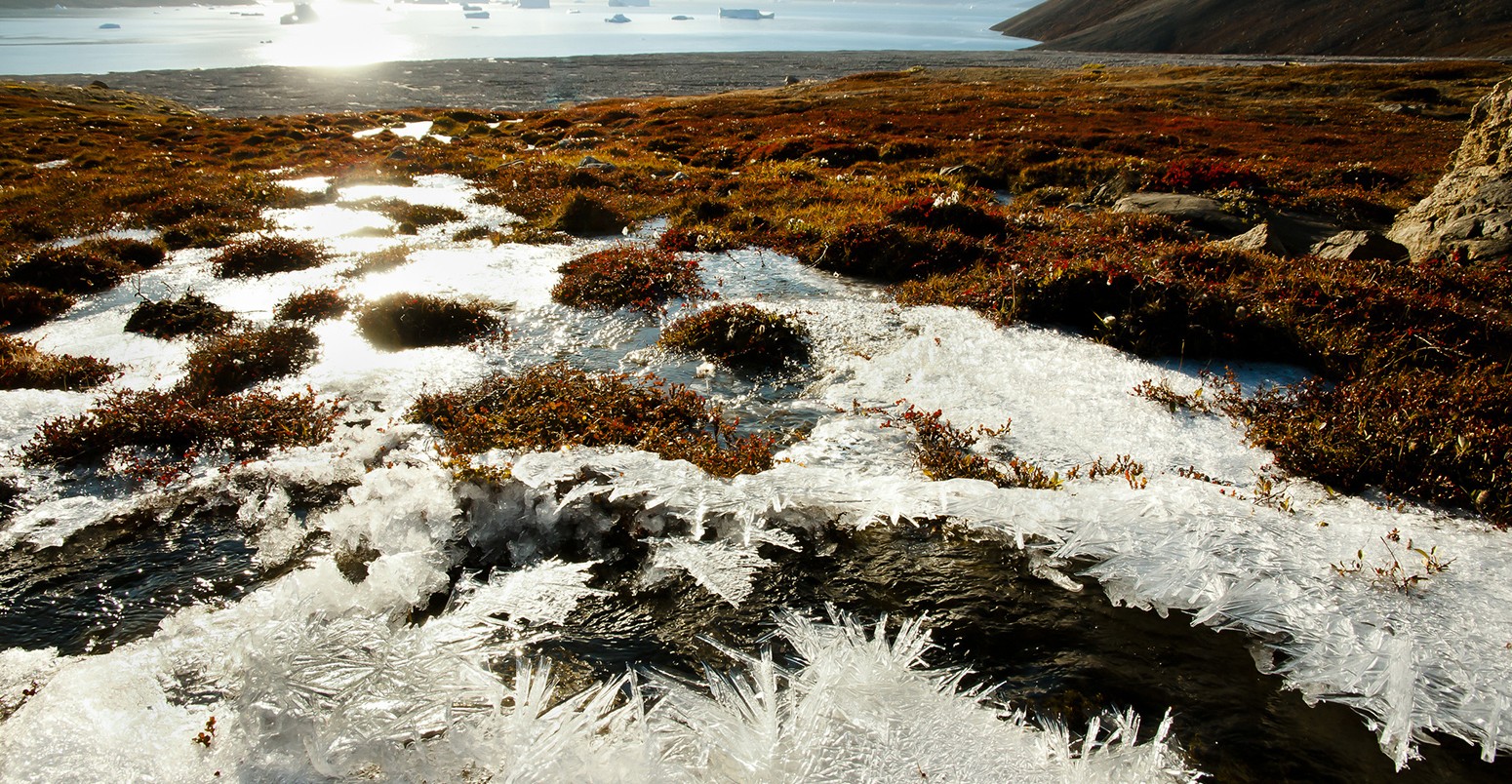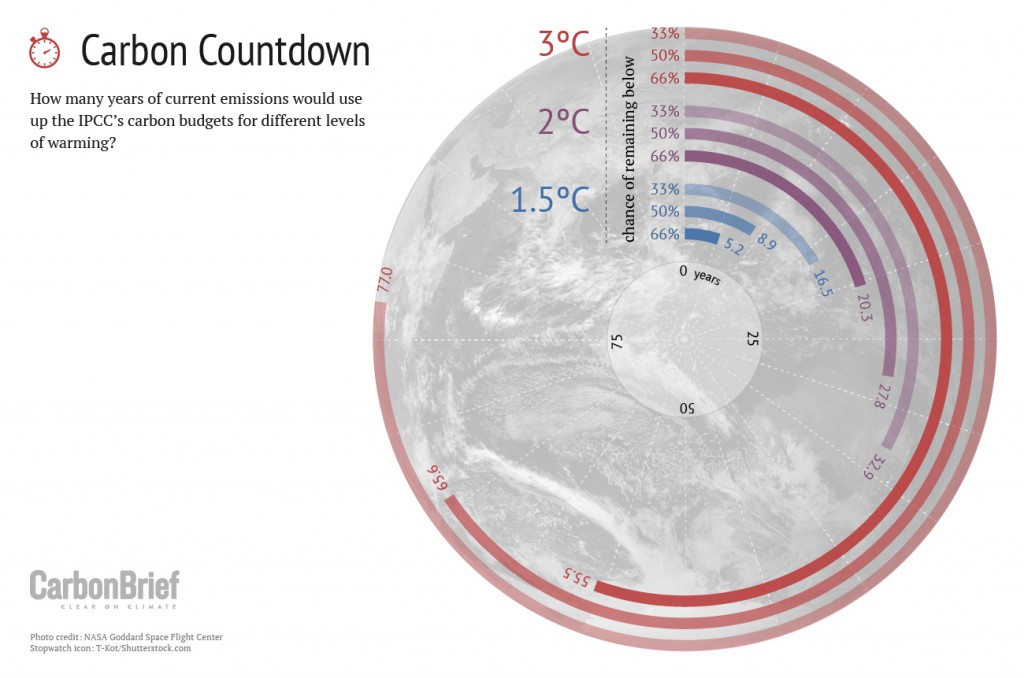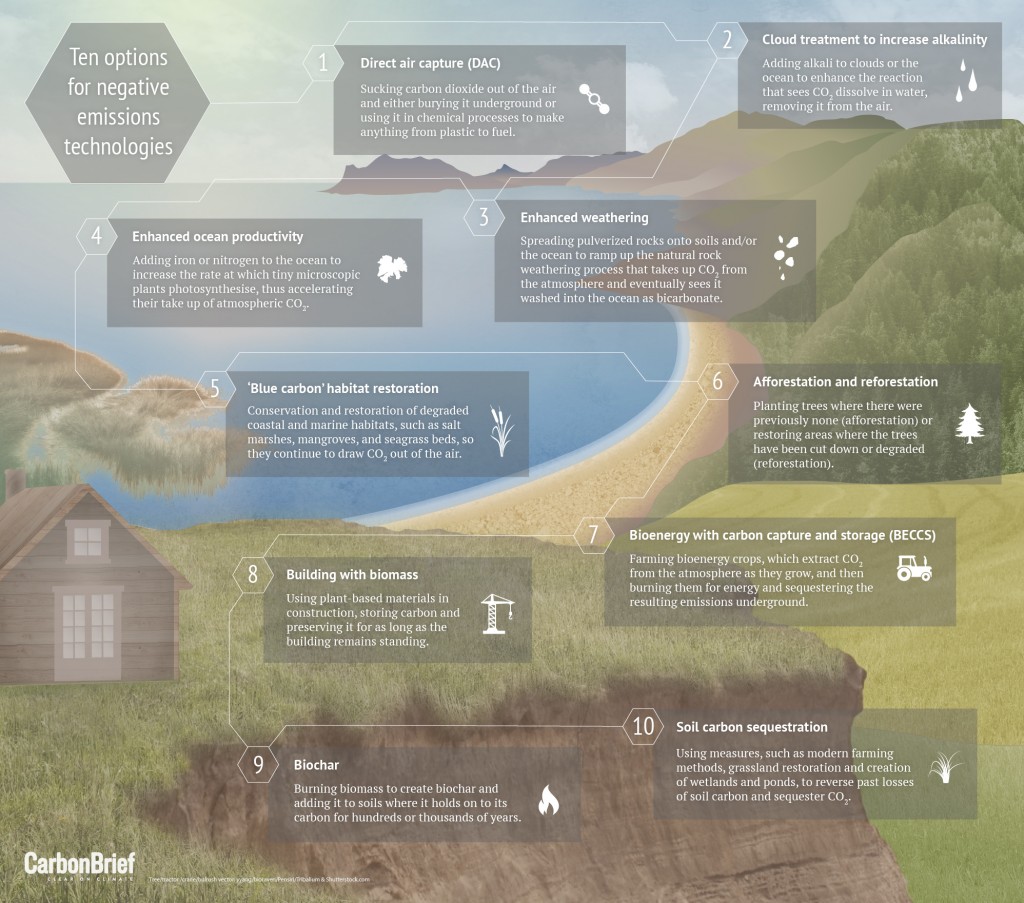
UK unveils research priorities for 1.5C climate change goal
Roz Pidcock
11.11.16Roz Pidcock
11.11.2016 | 11:01amThe UK government has given its clearest sign yet of how it intends to support efforts to limit warming to 1.5C, the ambitious goal that emerged from last year’s Paris Agreement on climate change.
Carbon budgets, “negative emissions”, biodiversity, sea level rise and the Greenland ice sheet all feature in the 10 new research projects given the green light this week, with funding totalling £963,959.
The money will come jointly from the department of Business, Energy and Industrial Strategy (BEIS) and one of UK’s biggest science funders, the Natural Environment Research Council (NERC). The final decisions on who gets funding were announced officially this week.
Grants were awarded to seven different UK institutions: the Universities of Exeter, East Anglia, Reading and Southampton, Open University, NERC’s Centre for Ecology and Hydrology and the National Oceanography Centre. Expertise and support will also come from the Universities of Oxford, Leeds and Bristol, as co-investigators. Especially successful in pitching for money was the University of Exeter, whose scientists will host three out of the 10 projects and receive a third of the total funds available.
Funding call
The majority of scientific research in the UK is funded by the taxpayer, with NERC one the six main research councils responsible for deciding what the priorities should be and for allocating funds. NERC is specifically responsible for funding research in the environmental sciences.
In July, NERC asked scientists to submit research proposals under the theme, “Understanding the pathways to and impacts of a 1.5C rise in global temperature”. This was a specific response to the goal set out in the Paris Agreement to “pursue efforts” to limit warming to 1.5C.
To win funding, the proposals needed to tick one of two boxes, preferably both. They should either provide the government’s independent advisors on climate and energy, the Committee on Climate Change (CCC), with evidence to underpin the UK’s carbon budgets, or feed directly into the IPCC’s special report on 1.5C, due for publication in 2018.
Starting immediately and lasting only 12 months, the unusually quick turnaround for projects is partly to help make sure the results can be submitted for publication in an academic journal by October 2017 – the cut-off point to be included in the IPCC’s special report.
Winners
Applying for funding is typically very competitive. Only a fraction of proposals are successful. For NERC, the scientists need to be based in the UK, but the research can be, and usually is, global.
In total, 10 separate projects won funding. All received at least £75,000 with six projects getting the full £100,000, the maximum amount allowable under this call.
A couple of the projects aim to pin down the maximum amount of greenhouse gases we can emit and still keep the 1.5C target in our sights – a concept known as the “carbon budget“.
A new project led by Prof Pierre Friedlingstein at the University of Exeter estimates that around six years of current emissions would put the 1.5C target out of reach are overly pessimistic. Refining the models on which such estimates are based to better reflect recent warming, aerosols and carbon cycle feedbacks would extend that timeline and avoid giving the impression that the 1.5C goal is not achievable anymore, the project’s description says.

Carbon Countdown: How many years of current emissions would use up the IPCC’s carbon budgets for different levels of warming? Infographic by Rosamund Pearce for Carbon Brief.
On a related note, Dr Phil Goodwin and colleagues at the University of Southampton have built a climate model that can perform millions of climate simulations, all ending up at the same 1.5C warming target, but covering a range of compatible emissions scenarios. By narrowing down the uncertainty in carbon budget calculations about how sensitive the climate is to greenhouse gases, the scientists can get a better handle on how “feasible” the 1.5C goal is in the real world.
Part of working out any carbon budget involves understanding how much of the CO2 we emit is absorbed by plants and the oceans. A project by Dr Paul Halloran and colleagues at the University of Exeter says that past work projecting how much these “sinks” will shrink as the climate warms are also overly pessimistic, because they underestimate how quickly oceans absorb carbon. Precision about the size of the budget is important when it is tight to begin with.
Any carbon budget has to allow for all greenhouse gases, not just CO2. A new project led by Dr Gary Hayman from the NERC Centre for Ecology and Hydrology and involving the University of Leeds will model how much methane wetlands and permafrost will release as the climate warms. Carbon escaping from a thawing Arctic is not currently included in climate models because it’s been difficult to pin down how much there is and how quickly it will be released.
A separate project led by Prof William Collins from the University of Reading will look at the added climate benefits of reducing levels of methane in the atmosphere, on top of removing a powerful source of warming. Less methane would mean less ozone, a poisonous gas to plants. This would, in turn, enhance plant growth and CO2 uptake. The intention is to help policymakers judge how much to focus on methane mitigation as well as policies that reduce CO2.
On the topic of mitigation, Prof Peter Cox from the University of Exeter won funding for a project weighing up the benefits and risks of Bioenergy with Carbon Capture and Storage (BECCS), the “negative emissions” technology thought to hold the most potential to bring down CO2 levels. The question the scientists want to answer is, do the knock-on effects for food and water of the amount of land needed to grow bioenergy crops outweigh any climate benefits?

Infographic: Ten options for negative emissions. By Rosamund Pearce for Carbon Brief.
![]()
Understanding how much negative emissions we’re likely to need demands, among other things, that Integrated Assessment Models more accurately reflect how quickly new technologies can be taken up in the real world. A project by Dr Neil R Edwards from the Open University aims to address this with a new, more realistic set of possible routes to 1.5C.
Even if we do stabilise warming at 1.5C in the long term, it will likely require overshooting the carbon budget and coming back down. But how far we allow temperatures to rise in the meantime is important because not all the impacts will be reversible. Prof Jonathan Gregory at the University of Reading has a new project examining whether a warming “threshold” exists, beyond which the collapse of the Greenland ice sheet and several metres of sea level rise is inevitable.
Prof Gregory explains more in the video below. We asked scientists recently how the 1.5C target is reshaping research priorities.
A separate project led by Dr Svetlana Jevrejeva at the University of Southampton explores how much sea level rise we’d get with 1.5C and 2C warming, and what the differences between them would be in different parts of the world. Projections designed specifically around these two climate targets don’t currently exist even though the consequences for the 600 million people living in low-lying coastal areas are huge, the project explains.
Finally, Dr Rachel Warren from the Tyndall Centre at the University of East Anglia has a project to explore the risk to biodiversity from 1.5C of warming, and how that compares to 2C. As well as looking at the difference half a degree makes, the scientists intend to look at the impact on biodiversity of striving to meet either the 1.5C or 2C target, especially if achieving it through BECCS requires turning large amount of potential habitat over to grow bioenergy crops.
NERC says all data sets “will be openly available for use by anybody without any restrictions as soon as the project has completed”. All publications in scientific journals will be open access.
Special case
Much has happened in the 12 months since the aspiration to limit warming to 1.5C was included, to many people’s surprise, in the Paris Agreement.
Researchers are responding with renewed vigour to the challenge, a major conference was convened in Oxford last month to gather expertise, and there appears to be no shortage of opinions from inside and outside scientific circles on how likely it is that we’ll achieve the 1.5C goal.
With things moving fast, all that’s needed is some new science to populate the pages of the IPCC’s much-anticipated special report.
There is, of course, already some research on 1.5C out there. NERC says the newly funded projects will build on work carried out under the AVOID2 programme on emissions scenarios, BECCS and the impacts of 2C of warming, for example. Nevertheless, the new projects given the go-ahead this week will be an important part of the UK’s contribution to the special report.
-
UK unveils research priorities for 1.5C climate change goal
-
How the UK government intends to support efforts to limit warming to 1.5C

